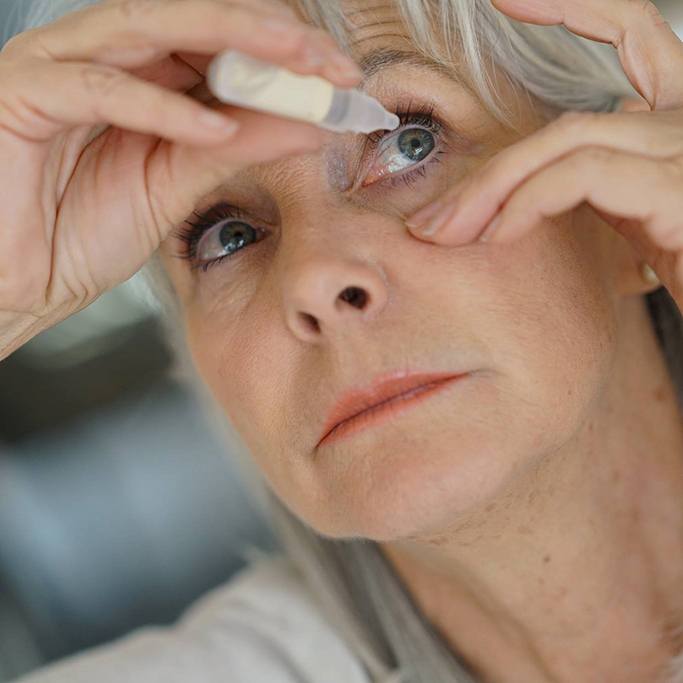
What is Dry Eye?
Dry eye results from the break up or lack of tear film that normally lubricates your eyes to provide moisture, protection and clear, comfortable vision.
Common causes of dry eye are aging, hormonal changes in women entering menopause, pregnancy, taking oral contraceptives or hormone replacement therapy, as well as diseases such as asthma, diabetes, autoimmune diseases, including Sjogren’s Syndrome or simply smoke, wind or contact lenses.
For a majority of dry eye sufferers a defect of the lipid layer of the tear film is the trigger of the dry eye complaints. The lipid layer is a very thin layer of fat, composed of lipids produced by the Meibomian glands. This lipid layer protects the tears from evaporation and prevents the tears from running over the lid margin. A lack of these lipids results in an increased evaporation of tears.
What Are the Common Symptoms?
Burning, itching, tearing, foreign body sensation or the sensation of dry eyes are symptoms of irritated eyes. These can also be caused by insufficient moisture or by hypersensitivities (i.e. allergies) to substances like pollen, animal hair or household dust, for example. As both can present with similar symptoms, it can be difficult to differentiate between a dry eye or an allergic eye.
Dry eye is one of the most common complications following eye surgery. Continuous and sufficient lubrication is necessary to regenerate injured superficial tissues of the eye.
How Many People Have Dry Eye?
Dry eye is a chronic disease that affects over 6 million people in Canada1. We know that 86% of dry eye sufferers are reported to have clinical signs of Meibomian Gland Dysfunction (MGD)2, and now targeted treatment is here.
Is There Anything I Can Do?
At St. Lawrence Eye Care, we are able to offer several different treatment options for dry eye. Meibomian gland dysfunction is treatable by removing the oil obstruction, unclogging the glands and using digital heat technology. Once we unblock the glands, it will be easier for the oil to be released naturally. Your doctor will assess your eyelids to determine the treatment zones. Therapeutic heat will begin to warm the blocked glands to a safe temperature to help soften and release the oil. Through compression, the oil is expressed from the glands and the treatment is complete.
Book an Appointment
To find out more about dry eye therapy, please get in touch with us.

1. Caffery et al. Prevalence of dry eye disease in Ontario, Canada: A population-based survey. The Ocular Surface. 2019:1-6
2. Lemp MA, Crews LA, Bron AJ, Foulks GN, Sullivan BD. Distribution of aqueous-deficient and evaporative dry eye in a clinic based patient cohort: a retrospective study. Cornea. 2012;31:472-47
